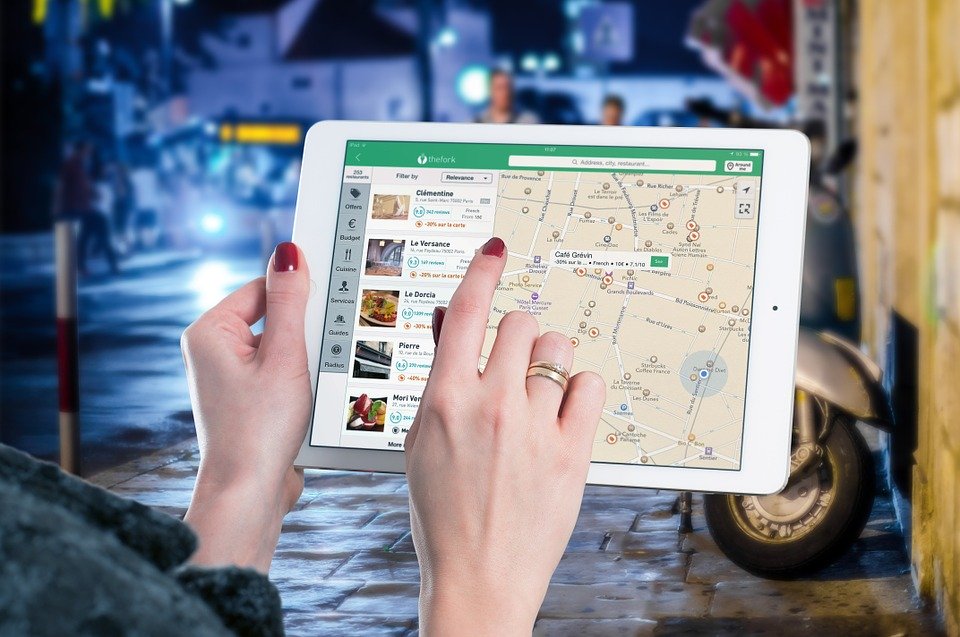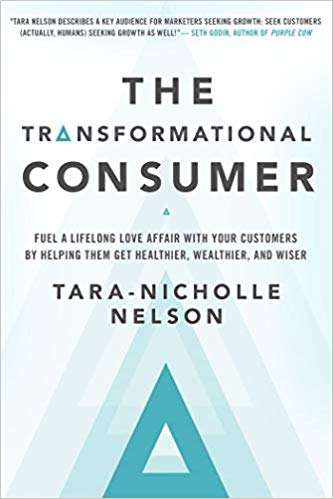
To do well in content marketing, you need to know who your most valuable customers are. These high value clients are the ones most likely to make repeat purchases and stay loyal to your company.
Chances are that these individuals are highly engaged Transformational Consumers. At least according to Tara-Nicholle Nelson in her wonderfully insightful book The Transformational Consumer.
Formerly vice president of marketing for My FitnessPal (now part of Under Armour), Tara increased the number of users for MyFitnessPal from 45 million to 100 million in 18 months, increased customer engagement by 22%, and helped the company to be sold to Under Armour for US$475 million in less than two years.
Wow!
The secret behind Nelson’s success? Identify who the company’s transformational consumers are; discern what’s in their brains, emotions, and behaviours; map out their hero’s journey; and shift from making products to solving customer problems.
You too can emulate Tara’s technique by following these steps to meet the needs, wants and desires of forward-looking consumers:
- Rethink what you sell
- Rethink who your customer is
- Rethink how your marketing works
- Rethink who your competitors are
- Rethink your company culture
First, and perhaps most importantly, you need to know who exactly these “transformational consumers” are.
Who are Your Transformational Consumers?

Considered the most valuable, least understood customers of our time, transformational consumers see life as a never-ending series of HWW projects, ie…
- Live Healthier
- Be Wealthier
- Be Wiser
They are the folks who view life as a continual series of personal disruption campaigns: behaviour change projects to live healthier, wealthier and wiser lives.
Early adopters of new products and technologies that can help them solve their personal disruption conundrums, they possess five core characteristics (acronym HUMAN):
- H – Focus on joyful prosperity: healthier, wealthier, and wiser
- U – See life as an unending series of personal disruption campaigns
- M – Have an extreme growth (versus fixed) mindset (read this article)
- A – Are biased towards action
- N – Engaged in a never-ending search to find products, services, and content that support their behaviour-change goals
Engaging with these consumers isn’t about telling your brand story or your company story. Rather, it is about crafting an authentic, relatable, warts-and-all bef0re-and-after story about them, and delivering products and content that help them progress long their journeys.
Remove Resistance and Trigger Progress

How do you invoke the love and loyalty of these transformational consumers?
The answer lies in two-steps that you can do.
1) Remove Resistance and Barriers
Your job as a company or a brand is to identify what’s stopping your customers from progressing forward and to remove them.
These can be an “emotional pushback, decision trap, logistical difficulty, ability hurdle, pain point, friction, or psychological bias that causes people to stumble, get stuck, get frustrated, or flat-out quit along their goal journey.”
2) Trigger and Smoothen Progress
You need to also help your customer to transform and move forward by…
- Facilitating progress with the right knowledge (think Content Marketing)
- Develop products and content that assist them to make specific, timely actions online or offline
- Persuade them by providing B.J. Fogg’s Functional Trial: right Tool to do things better; right Medium for them to experience change; and Social Actor to enable relationships/ communities that help create behaviour change
Your Consumer’s Hero’s Journey

Courtesy of Wikimedia Commons
If you think of your customer’s journey as a quest similar to the Hero’s Journey (one of the storytelling formulas here), you should then map out his or her story to see how it intersects with yours.
Typically, these are the different elements of the journey:
- A hero (your customer)
- His or her quest for transformation (life health, prosperity, personal growth, goal)
- Enemies and villains (resistance of all sorts)
- Mentors, allies, guides or tools (this is where your company, product and content comes in)
- Battle and victory! (progress of all sorts, a role that you can facilitate)
- A return home journey as a changed being, with new skills, resources or assets (ie your customer becoming healthier, wealthier and wiser)
From Product-first to Problem-first
In serving your transformational customer, you need to rethink what you sell. Quoting from the book:
“…your company must sell a possibility: it must sell a specific sort of transformation, a specific sort of behaviour change, a specific sort of journey from a problematic status quo to the new levels and possibilities that will unfurl after the behaviour change you help make happen.”
To become a problem-first company, you need to know the Problem which your company is set out to solve, and identify the People who have that problem.
Come up with a Story Spine
A good way to do so is to come up with a story spine—a simple template for telling a story that goes like this:
- Once upon a time, there was ______ (your customer, eg “Freddie Tan”).
- Every day, _______ (problem your customer is facing, eg “unkind comments from colleagues about his size”).
- Until one day, _______ (progress or behaviour change trigger, eg “he saw himself in the mirror, and frowned…”).
- And because of that, ______ (behaviour change that results, eg “started to change his diet”).
- And because of that, ______ (behaviour change that results, eg “walked up the stairs to his apartment”).
- And because of that, ______ (behaviour change that results, eg “joined a healthy lifestyle group”).
- Until finally, _______ (aspiration achieved, eg “lost a total of 10 kg in 3 months”).
- And ever since then, _______ (changed status, eg “gained new admirers in office”).
In crafting your customer’s story spine, remember that your company’s goal is to come up with as many ways to remove resistance, provide tools, or provide other triggers to help your customers to make that change.
Customer Journey Mapping

To better study who your transformation consumer is, you should develop what Nelson calls a “customer journey map.”
There are six stages here.
#1 Map out Their Universal Stages
This is a model of your customer’s life cycle with your product, not just in transacting with your company (eg using a product) but in its entirety.
#2 Determine Feelings and Behaviours
How would your customers feel at each stage? What behaviours might they possibly be interested to do? Think of the levers that could help them achieve their goals.
#3 Progress Triggers
Identify how they can move from one stage of their transformational journey to the next. For example, if they are previously relatively passive about getting healthy, they could be triggered when they saw that an old school mate has lost a lot of weight.
#4 Define the Resistance: Obstacles, Quit Points, Rules of Thumb, Decision Traps…
Work out the barriers that could come in their way. What would get them stuck? What makes them quit?
#5 Meet Them at Their Micro-moments
According to Google, micro-moments could be the following:
- I want-to-know moments
- I want-to-go moments
- I want-to-do moments
- I want-to-buy moments
- Show-me-how moments
- One-step-at-a-time moments
- Time-for-a-change moments
- New-day, new-me moments
You can read more about them here.
#6 Natural Language and Mental Frames
Finally, identify how your customers naturally phrase their problems in their minds. Think about their mental frames, ie “things I care about,” and use that to come up with content that addresses specific obstacles and sticking points faced by your customers.
Which brings us to our next phase of marketing.
New Rules in Marketing—Think High-Value Content

Yes, I love this chapter because it addresses the core of my belief about marketing.
Namely this: nobody cares about stories of your brand. Instead, what your customers care about are high-value content that helps them to progress on their journeys.
There are 5 Rules of Content Engagement here:
- Engaging content is not beautiful messages about your brand; content that engages is high-value content that removes resistance and triggers progress along your customers’ journey
- Your evergreen message pillars (ie content pillars) = customer journey + resistance and progress triggers + natural language
- Business objectives + micro-moments = which content to put out where, and when. Here, you need to ensure that your medium (email, social media, PR, websites, SEO, print), format (eg video, text, photos, infographics), and substance (ie story and brand voice) should overlap in what Nelson calls a “Transformational Consumer content marketing sweet spot.”
- Ongoing listening + real-time content-performance data = engagement marketing
- Content = R&D for product. Use insights from your content performance to drive product development.
In short, your content should remove obstacles from your consumer’s transformative journeys.
Who is Your Real Competition?

Do you know who your REAL competitor is?
Nope it isn’t another company or its products. Rather, your competition is anything and everything that interferes with your customers’ progress.
This idea was truly mind-blowing for me. It is a radical shift in how you think about competition, and find ways to address and remove them.
There is a 3-stage process that you should use here:
- Focus on your people
- Focus on your people’s problems
- Focus on First Principles to boil things down to their fundamental roots, and find ways to attack those problems using your team’s talents, reasoning and skill
By doing so, you’re able to come up with innovative products, services or content that can remove specific obstacles form your customer’s journeys.
How to Build a Transformational Culture
Finally, and perhaps most importantly, serving a transformational consumer requires your company to be transformational itself.
To retain and enage your employees (who often are transformational consumers themselves), you need to create a fear-free workplace.
Engage in a culture of conversation. Let anybody in your organisation have the chance to speak their minds, and to raise objections where necessary.
Conclusion: Achieving Transcendence through Marketing
I don’t often get this excited about a new idea, but I am a firm believer in The Transformational Consumer.
The book’s central thesis of focusing on a specific type of consumer—those looking to help themselves do better—provided me with much food for thought.
While it focuses on more than just marketing, The Transformational Consumer provides a good guide to how we can craft better content and build better products that are specially tailored to meet the needs of this top 20% of consumers.
To find out more, go check out their website here.

